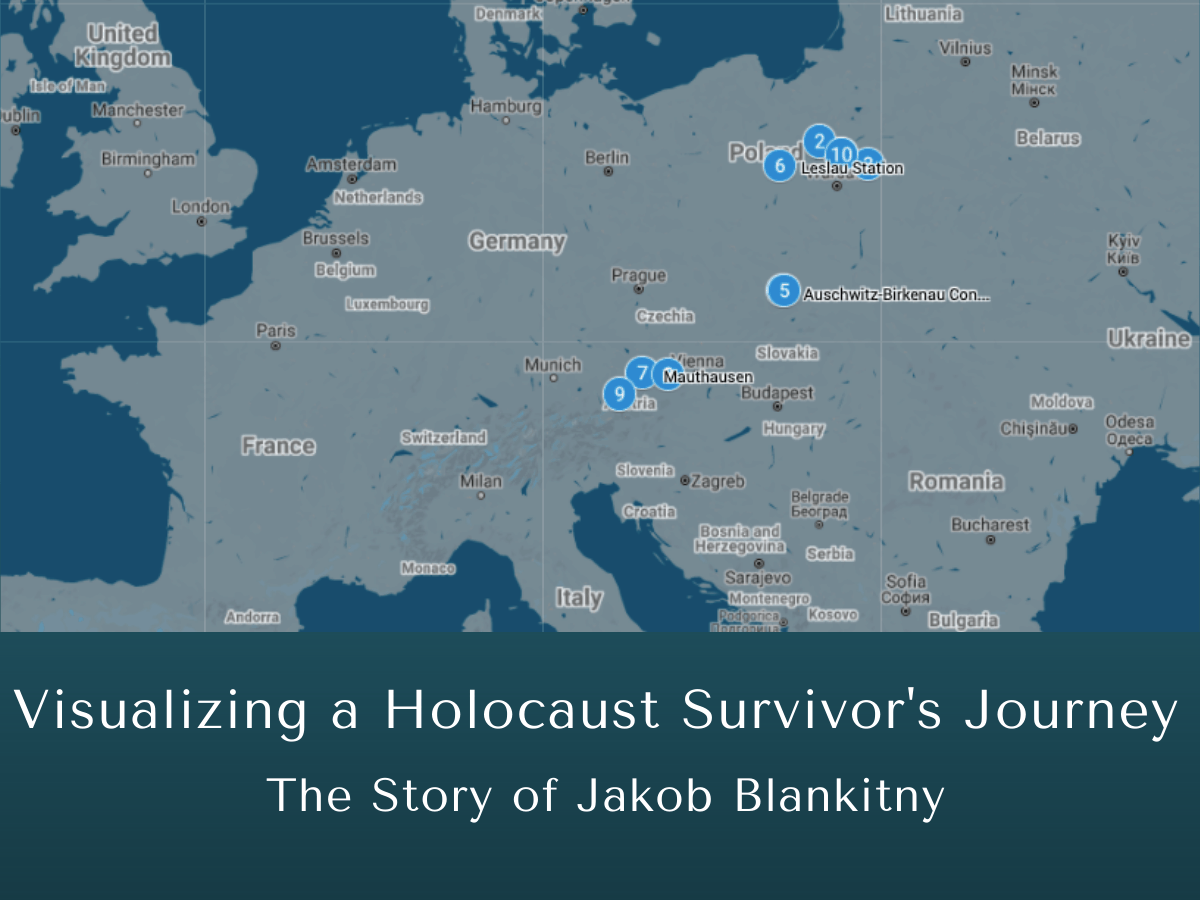Target Student Group:
This lesson is designed for a 9th Grade Modern World History classroom. Students have just finished a unit on international relations and politics in WWII and are starting a unit on Genocide and the Holocaust. This lesson would be taught in the middle of the unit so that students have some background knowledge on the Holocaust before examining this story.
Instructions for Students
- Individually follow Jakob Blankitny’s experience of the Holocaust by clicking through the locations that Jakob was sent to.
- Read the accompanying text in which Jakob describes his experiences. Then, examine the different images for each location.
- Lastly, answer these 5 question about Jakob’s experience and record your response in a Google Doc to turn in.
- Summarize Jakob’s experience in the Holocaust. What happens to him? How does he remember these events?
- What are some key words you would use to describe the emotions Jakob experienced? Support your answers by including at least 3 quotations from the text.
- How does Jakob’s account connect to the wider historical context of WWII? (Aka what events does he mention have you heard about before?)
- Examine all the locations on the map. What do you observe about the geographical locations Jakob is sent to?
- Why is Jakob’s account significant? How does it relate to how we remember the Holocaust?
- I will provide feedback and comments to your answers after you turn in your Google Doc to Canvas.
Lesson Goal:
Jakob Blankitny was a Polish Jew who survived the Holocaust, and his story was recorded by the United States Holocuast Memorial Museum. The USHMM’s project entitled Behind Every Name A Story is intended to “give voice to the experiences of survivors during the Holocaust.” Similarly, I believe that naming the victims and acknowledging each personal story provides real and emotional insight into a horrific instance in history. My goal for this lesson is as follows:
Students will be able to connect the personal story of Jakob Blankitny to its wider historical context to understand the overall inhumane imprisonment, abuse, and dislocation of Holocaust victims and survivors.
Google MyMaps helps me achieve this goal because it provides a visual demonstration of Jakob’s journey and all the places he was moved by the Germans. When discussing history (especially World History) it is often difficult for student to connect abstract concepts or facts to the actual, concrete places they took place. Additionally, this platform also shows students that these place and their dark histories still exist today. Google MyMaps grounds historical fact and primary sources in reality so students can make clear connections between the past and the present.
The Story of Jakob Blankitny
Direct link to Google MyMaps: The Story of Jakob Blankitny


This is such a great activity! So great for getting students to go in-depth on this person’s story using visuals to enrich their learning! I would have loved doing this in a high school history class!
Outstanding work. Very well researched. So powerful to see his journey and read his words. Your instructions to students are well organized and lead them through the task in a well supported manner.
This lesson is so important in today’s climate of hate and scapegoating of the “other.” This lesson humanizes one man’s struggle and puts it into a geographical context. You should feel proud of your work.
I really liked this. It was very informative, and well laid out. Seeing the distances traveled really puts things into perspective and illustrates the Holocaust’s scope of operation in a meaningful way outside of just learning that there were concentration camps in Germany.